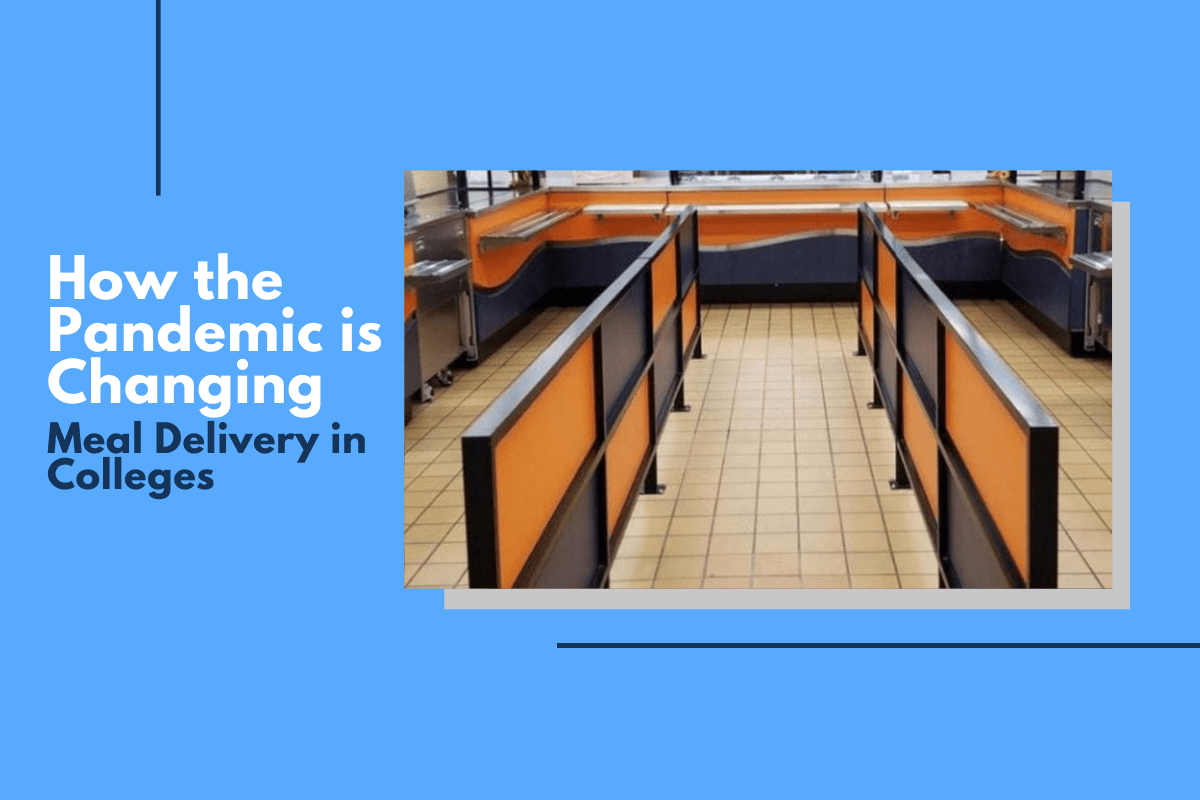
How the Pandemic is Changing Meal Delivery in Colleges
Step onto a college campus in 2021 and you’ll notice a few stark changes from a few semesters ago. First, the students, or lack thereof. In order to mitigate the spread of the coronavirus, many colleges and universities have moved to a virtual learning environment or a hybrid of in-person and online classrooms. Second, the staff. Professors, administrative staff, foodservice staff, maintenance staff, and more have all had their normal work routines and hours altered, with some, unfortunately, losing their positions entirely. But one thing that hasn’t changed on college campuses is the need to feed students in safe and efficient ways.
WHAT COLLEGE FOODSERVICE DIRECTORS ARE SAYING
At a recent NACUFS Town Hall, foodservice directors from colleges and universities across the country shared the changes, challenges, and opportunities that they were seeing.
STAFFING
While avoiding layoffs was a top concern in regard to staffing, foodservice directors felt that restaurant chains around campus were affecting the ability to hire and keep students on campus. In response to limited staffing, foodservice programs are doing more with fewer team members, with plenty of cross-training and bringing in labor from other departments. Staff training is mostly virtual, and technology limitations affect the quality of training that can be done, with a majority occurring remotely.
SERVING
The biggest challenge right now is an obvious one, and that is feeding students. A number of states prohibit inside dining or limit the number of students allowed in a dining hall at one time. The goal for colleges right now is to get students in and out of the dining hall in under five minutes. That means a serious adjustment in menus and execution. Microwavable meals and grab-and-go items are the primary meals nowadays. While some programs are using reservation systems, others use mobile ordering.
HOW COLLEGE FOODSERVICE PROGRAMS HAVE FOUND SUCCESS
One major shift in how colleges are serving meals during the pandemic is by taking a more retail approach to campus dining. Members of the Town Hall echoed similar sentiments, saying all you can eat dining has changed into retail only. The grab-and-go method of meal service has proven to be an effective one at mitigating contact by limiting the time inside the dining hall. One approach to a more traditional, pre-packaged grab-and-go meal that some colleges are adopting is the home replacement meal trend or meal kits that we’ve grown accustomed to seeing advertised. The goal of meal kits is to provide fresh, chef-quality meals with an emphasis on the convenience of ordering and pickup.
Prior to COVID-19, the University of Massachusetts at Amherst is one college that has taken the home chef kit model and made it their own. UMass Fresh “provides ready-to-cook dinner kits” that are cooked and chilled for transport right in the college kitchen, then packed up for takeout. With many students living off-campus, this offers them a practical meal plan solution as an alternative to off-campus takeout dining. The meals themselves are easy and quick to prepare, with multiple meal choices each day to choose from. Once a meal kit is prepped, it’s packaged for takeout and ready to pick up at a designated location. Now fully entrenched in a pandemic, this style of meal delivery makes more sense than ever.
MEAL DELIVERY DURING COVID AND POST-COVID TIMES
Whether it’s grab-and-go, meal kits, or takeout from mobile orders, college and university foodservice programs have found themselves adapting to this new environment. With easy-to-use, durable transport, meal delivery can get from the kitchen to the students in safe, convenient ways. The Curbside Pick Up Cart is the ideal solution to provide eye-catching, weatherproof transport options for your program’s meals, giving students on-campus meals without the risks associated with COVID-19. Drive-through pick up is commonplace for restaurants all over the country during the pandemic, and now your dining program can offer that same convenience.
